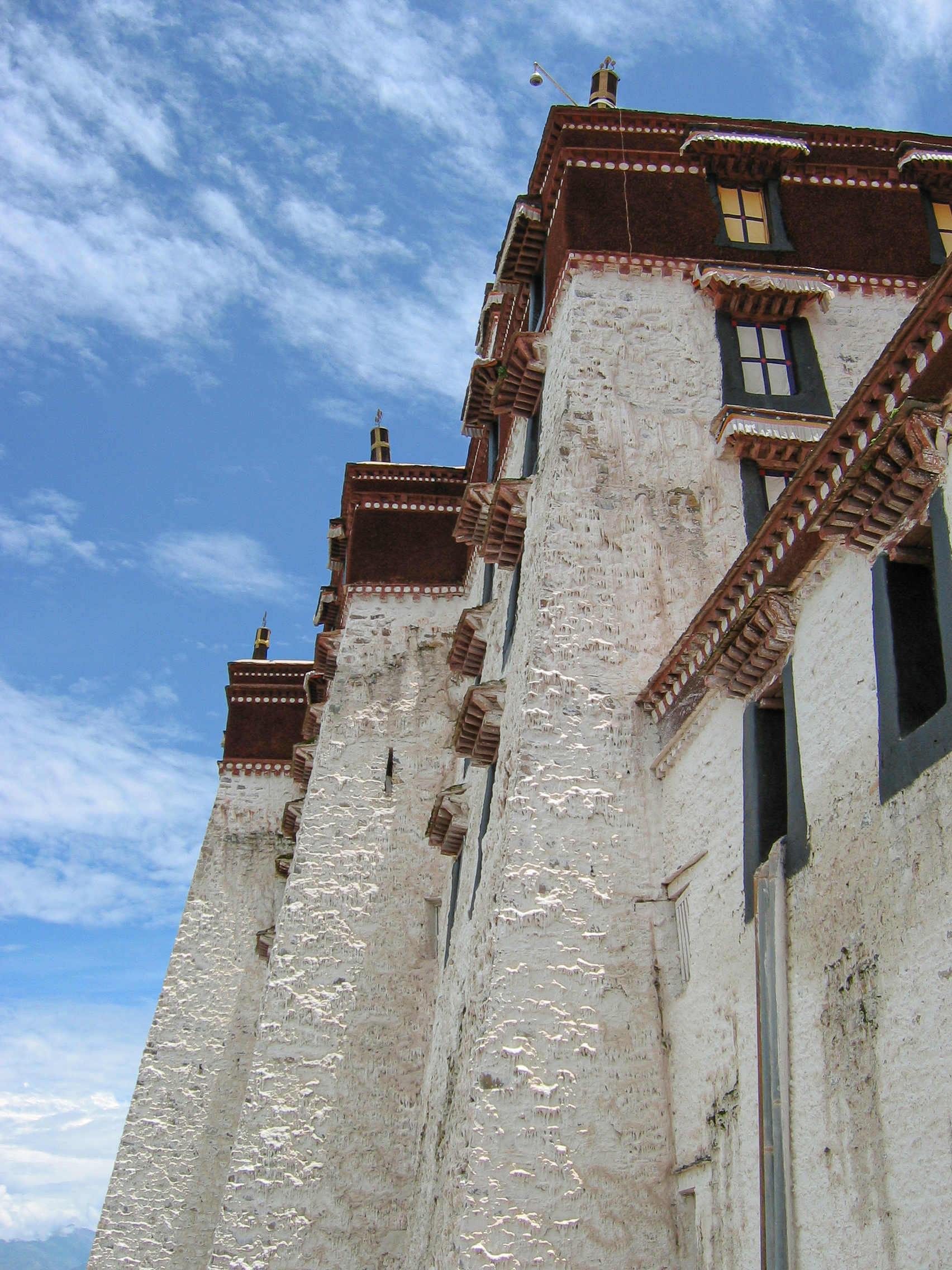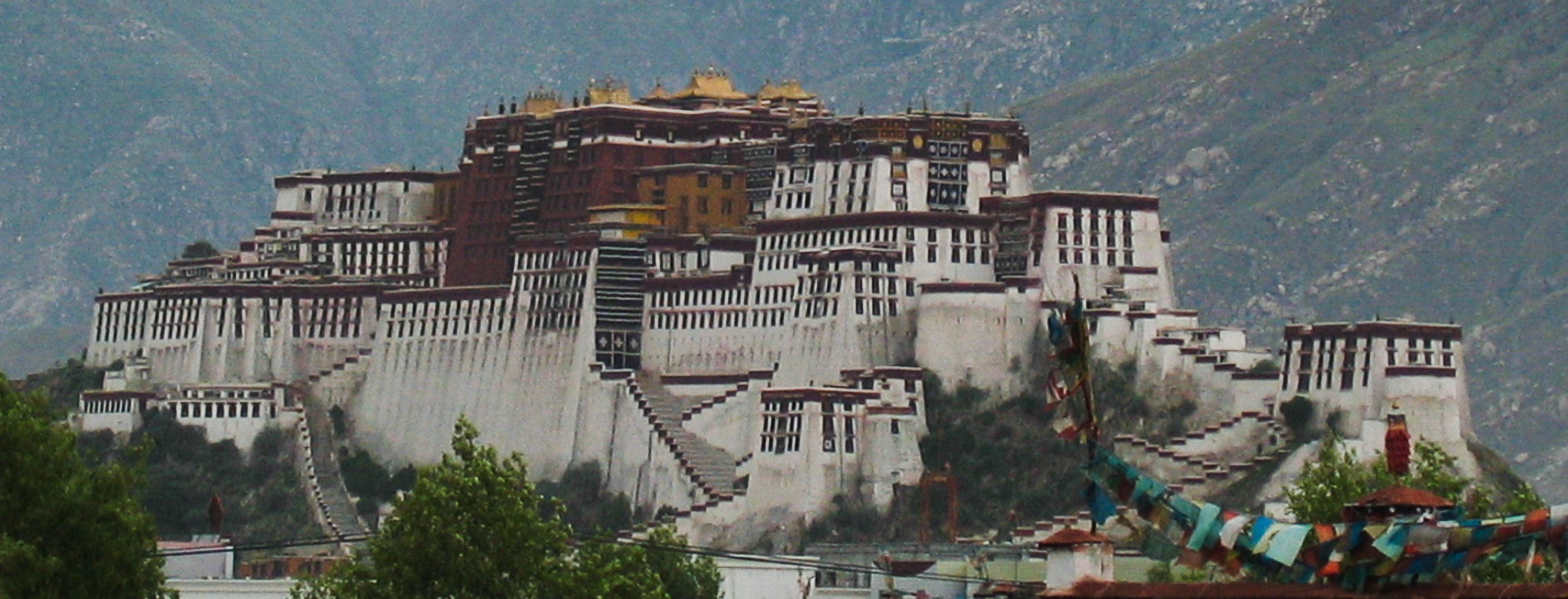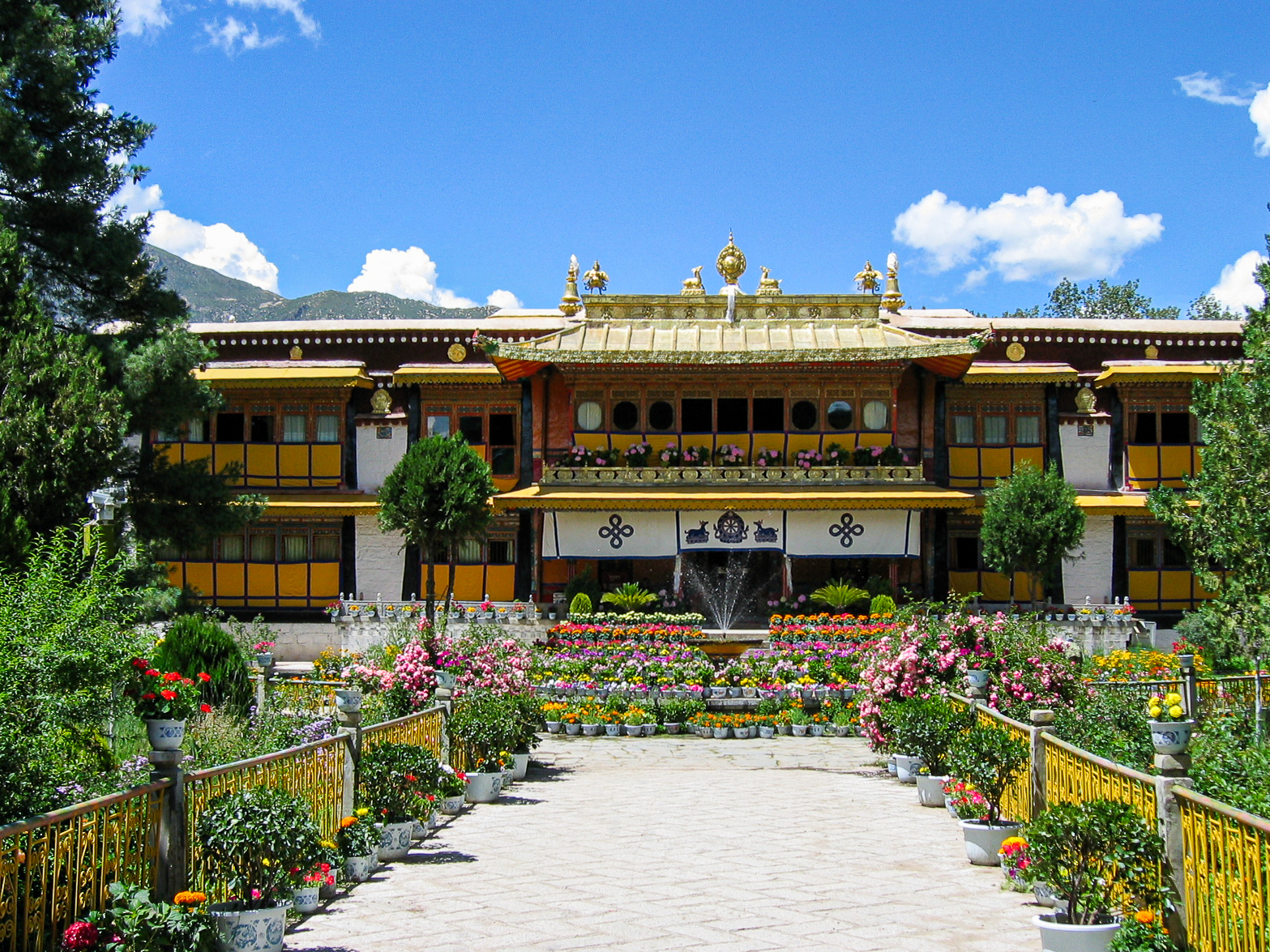Lhasa
The Potala Palace
Tibet’s most recognisable building is the Potala Palace. Often recognised as Tibet’s first emperor, Songtsen Gampo had the original Potala Palace built in the 7th century after moving his capital to Lhasa. The palace was destroyed during civil unrest in the 9th century. Finally, in the 17th century, the 5th Dalai Lama had it rebuilt as a winter palace and as the building we know today.
The current Dalai Lama has been in exile in India since 1959. The Potala Palace was left abandoned until its reform and opening as a museum. It was named a UNESCO World Heritage Site, in 1994.
To visit the Potala Palace, you have to go with a guide. We were very grateful to our guide who had had to spend three hours queueing to get the tickets the day before. We had just two hours to see a few of its great splendours.






The Jokhang
Little remains of the original 8-chapel temple that Songtsen Gampo had built in the 7th century. It has undergone many reforms and developments. Despite damage and desecration over the years, it has survived and stands as an impressive Buddhist temple in the heart of Lhasa. For Tibetan pilgrims, the Jokhang plays great importance in their lives. Watching the pilgrims whirling their prayer wheels while circumnavigating the Jokhang Temple is a hypnotic sight.




Norbulingka – The Summer Palace
Norbulingka was the Summer Palace of the Dalai Lamas and was built in the 18th century. As Lhasa continues to sprawl, it makes a peaceful and colourful hideaway within the city.



Around Town
Aside from the amazing temples and palaces, the most interesting part of Lhasa is the old quarters known as the Barkhour. It is the area around the Jokhang Temple. Little remains of the old houses, but it is still a strongly Tibetan area.









